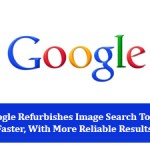
San Francisco — Relentlessly striving to help marketers better track sales, social network humongous Facebook on Tuesday took another stride in making its advertising more accountable for media buyers; launched a new conversion measurement system across its global footprint, allowing advertisers to measure the return on investment of their Facebook ads by tracking user actions such as registrations and shopping cart checkouts motivated by people seeing the ads.
The service, which is intended to attract direct marketers was initially introduced back in November, but now it is available globally and can be used on all Facebook ads and sponsored stories, the company says, as well as in combination with any other targeting services.
It empower advertisers to insert a piece of code on a Web site to track when desired actions, like shopping cart checkouts or registrations, are driven by someone seeing an ad on Facebook. The system can be used with all Facebook ads and sponsored stories, and in combination with any targeting.

Facebook revealed the news in a Studio blog post, indicating that marketers can additionally use optimized cost per thousand impressions (OCPM) to deliver ads to users most likely to make purchases on companies’ websites.
According to the blog post, when marketers choose Optimized CPM bidding, Facebook’s system will show ads to users who are most likely to convert. When the two metrics are used, ads reduced the cost per conversion by 40 percent, in comparison to cost-per-click ads on the same budget. This is the key for e-commerce and other direct response advertisers who use Facebook ads to lead users to third-party sites.

Facebook described its new conversion metric on the Studio blog:
“This entails that marketers who are interested in using Facebook ads and sponsored stories to drive specific actions on their websites can now utilize conversion measurement both to understand the ROI of their ad spend and to ameliorate that ROI on future campaigns,” the company adds.
The post further noted, “This should be extremely valuable for marketers in e-commerce, retail, travel, financial services, and other direct-response industries that value actions taken on their websites. Early testing of conversion measurement with optimized CPM has generated strong results for multiple advertisers who are focused on driving user actions on their websites.”
This conversion measurement and optimization can be used on all Facebook ads and sponsored stories, as well as in tandem with targeting capabilities. When marketers opt for the Optimized CPM bidding option, they can see which ads drive the most conversion and adjust their campaigns accordingly. Facebook suggested that marketers involved in e-commerce, retail, travel, financial services and other direct-response categories would benefit most from the new feature.
The social media giant claims that it is the only solution that can show when a person views an ad on one device (such as their phone) but converts on another (their desktop computer or tablet).
Among case studies of campaigns using conversion measurement with Optimized CPM during the beta period last year; Facebook noted that online retailer Fab.com was able to cut its cost per new customer acquisition by 39% when it adopted this type of bidding to serve ads to consumers deemed most likely to convert.
Facebook also said that conversion measurement is now available in power editor, the ads manager, and to API partners. Here is how it can be used:
-
Click on the conversion tracking tab in power editor in Chrome (www.facebook.com/ads/manage/powereditor/) or on the conversion tracking link on the left hand nav in ads manager (www.facebook.com/ads/manage).
-
Create your conversion tracking pixel(s) and implement it on your conversion page(s).
-
Once the pixel has been placed on your website, create ads and select “track conversions on my website for this ad.”
-
Set a budget and choose optimized CPM to deliver the ad to people most likely to convert.
More so, with loads of plus-point, Facebook has amplified its mobile advertising dramatically since last spring, the service is suited to tracking performance in cross-platform ad campaigns. Besides, the company claims that the difference now is the combination of conversion measurement and Optimized CPM, which allows advertisers to set their marketing goals, and then have Facebook’s system automatically serve ads in a way that achieves those goals as efficiently as possible.


